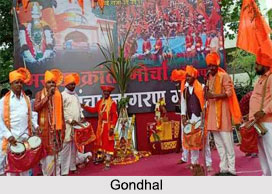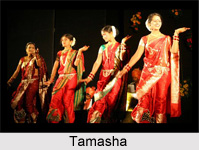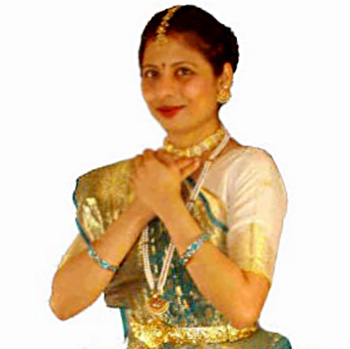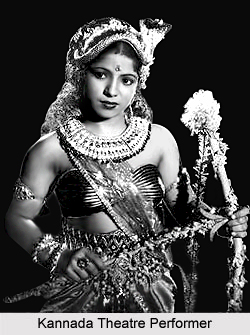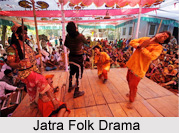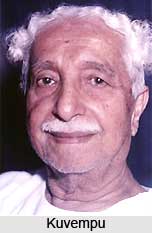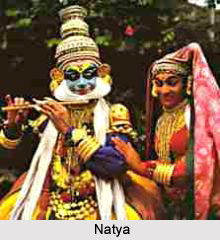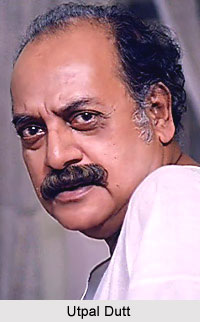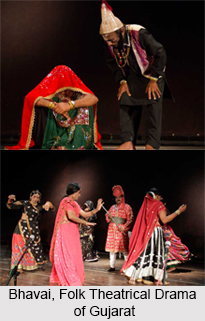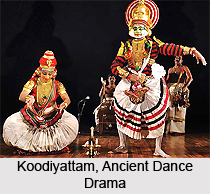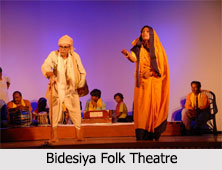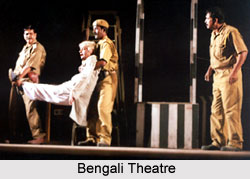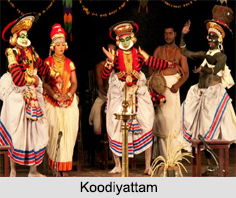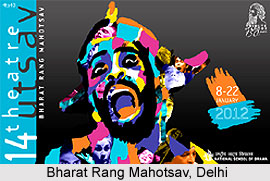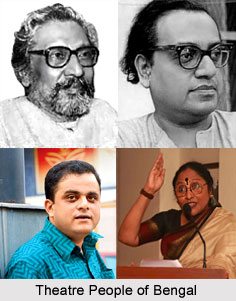Phani Bhusan Vidyabinode was originally known as Phani Bhusan Mukhopadhyay. But he was honoured with the surname Vidyabinode. He was a scriptwriter who made innovations to give the genre a somewhat contemporary look, and guru of many stars who attained celebrity status later. He was born in Garangacha, Hoogli district of West Bengal in 1894. Phani Bhusan was the son of a Jatra actor. He began his career as a scene painter for amateur theatricals but, attracted by Jatra. Soon he took to writing plays for it. Of some 200 roles he acted, his heroic Krishna i.e. `Basudeb` in 1926, Lakshman i.e. `Ramanuj` in 1928, Chandradhar i.e. `Chandradbar` in 1929, and Dadhimukh i.e. Chandrahas, 1940 are spoken of with awe for his great vigour. He served many Jatra troupes and later trained actors for Satyambar Opera. As there was another Phani-bhushan or Matilal in the Jatra circuit, Vidyabinode became known as Baro or older Phani, while Matilal was Chhoto or younger Phani.
Phani Bhusan Vidyabinode`s first script was a period piece. The name can be mentioned as Kshatriya gaurab i.e. `Kshatriya Glory` in 1910. But like most of his predecessors, he straddled Indian Puranic drama as well. All of these were based on episodes from the Mahabharata and Ramayana. He reduced the number of songs in these plays, each of which contained nearly a hundred songs used as dialogue in the old style. In his Basudeb, he kept only twenty songs, in Ramanuj he had forty. He also used semi-historical and hagiographical material in Baru Chandidas in 1933, Ramkrishna in 1936, Sadhu Tukaram in 1937, and Kabi Kalidasa i.e. Poet Kalidasa in 1940. Among about a hundred plays, his most famous are Bhagyadebi i.e. `Goddess of Fate` in 1924, Tarpan i.e. `benediction` in 1925, Sairitidhri in 1928, Chandradhar, Kushadhwaja in 1930, and Purnima milan i.e. `Union on a Full-moon Night` in 1939. Unusually, Muchir chhele i.e. `Cobbler`s Son` in 1942 depicted the grim reality of a caste-ridden society. Phani Bhusan Vidyabinode died in 1968.
This article is a stub. You can enrich by adding more information to it. Send your Write Up to content@indianetzone.com
